Tourism & Hospitality Destinations
Hyderabad’s Haute Cusine – Imperial Hyderabad
November 25, 2019
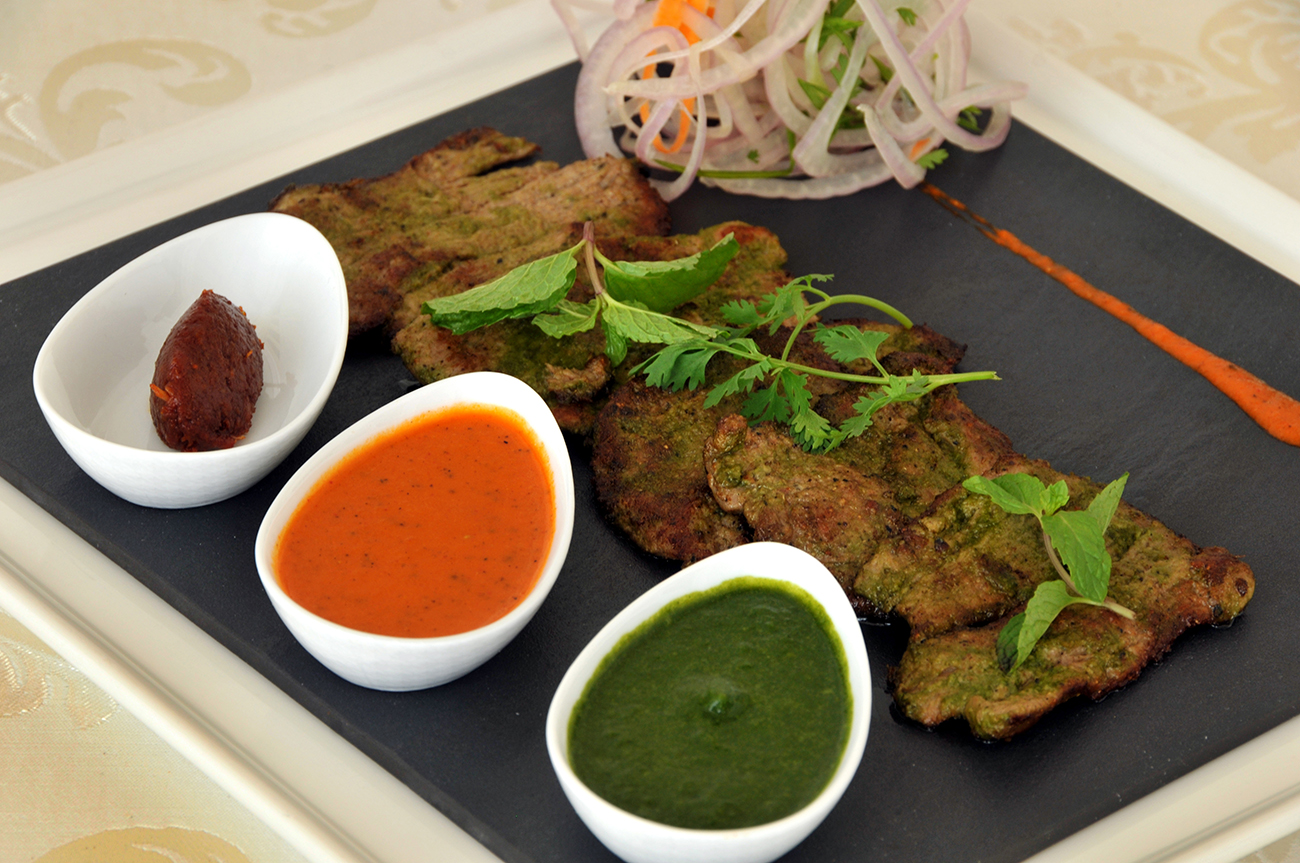
Anil Mulchandani
Food Tourism is at a nascent stage in India. The city of Hyderabad is a good example of food tourism, attracting visitors as much for its food as for its museums, monuments and modern facilities.
The palace kitchens were laboratories where dishes were created using diverse cooking styles and ingredients. The 565 princely states of India, and the smaller principalities, were ruled by various dynasties of Muslims, Sikhs, Rajput clans, Marathas, Kathis, Jats and other communities. Historically many of them had travelled far to conquer and colonise territories. Princes married princesses from different parts of India (in some cases like Hyderabad, also from overseas kingdoms) resulting in the transfer of knowledge of cooking styles and ingredients. The affluent princes were also close to British and other European aristocracy, and the states were visited prominent people from other countries.
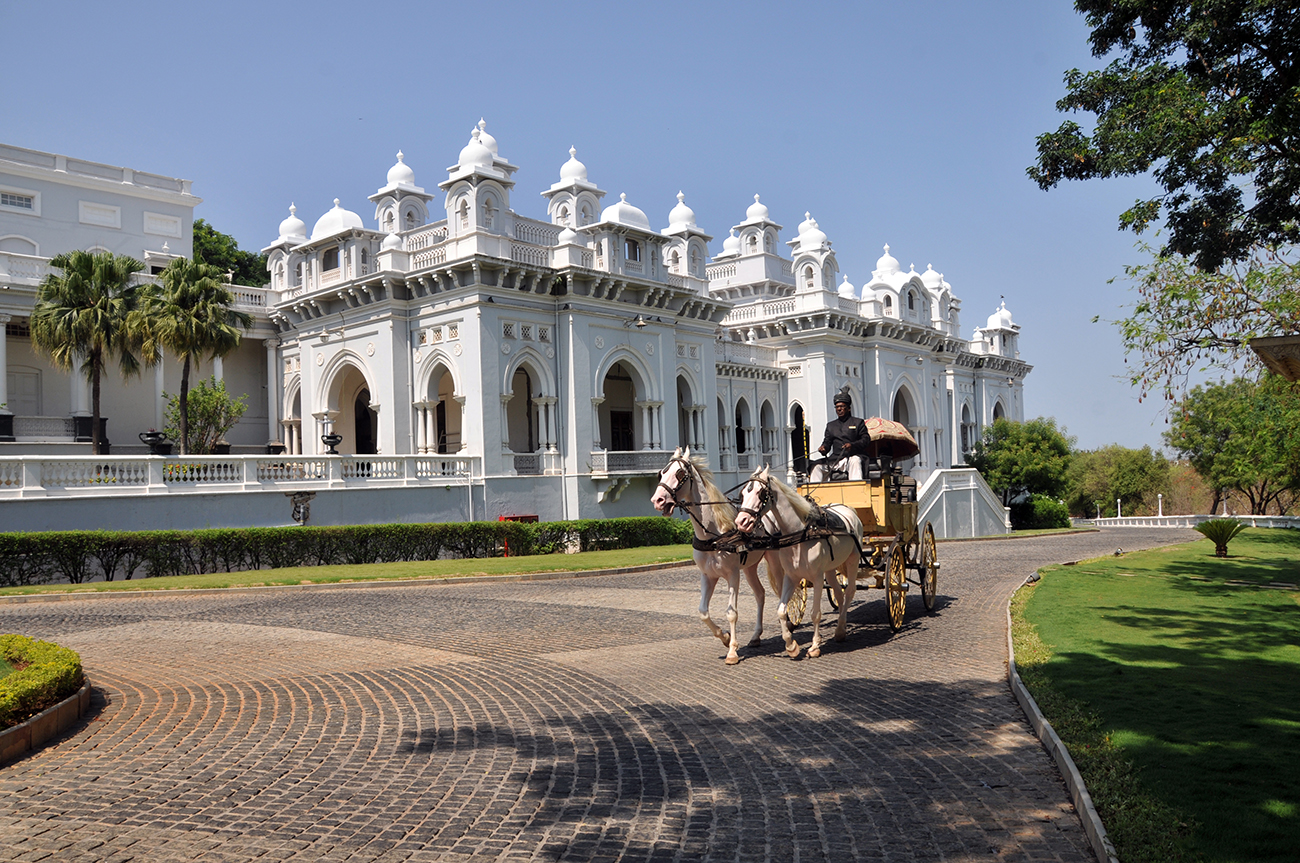 Taj Falaknuma Palace
Taj Falaknuma Palace
Some of the dishes created in the palaces are now widely served commercially, like the Galouti kebab and Kakori kebab created for the Nawabs of Awadh, the Laal Maas of Rajasthan or the Mysore Pak that was offered by the Maharaja of Mysore at the Chamunda temple. There is the apocryphal story about how the17th century Maratha rulers of Thanjavur missed Amti Dal from their homelands. It was made for him using and pigeon peas, mung bean and local spices, which is said to have given birth to Sambar.
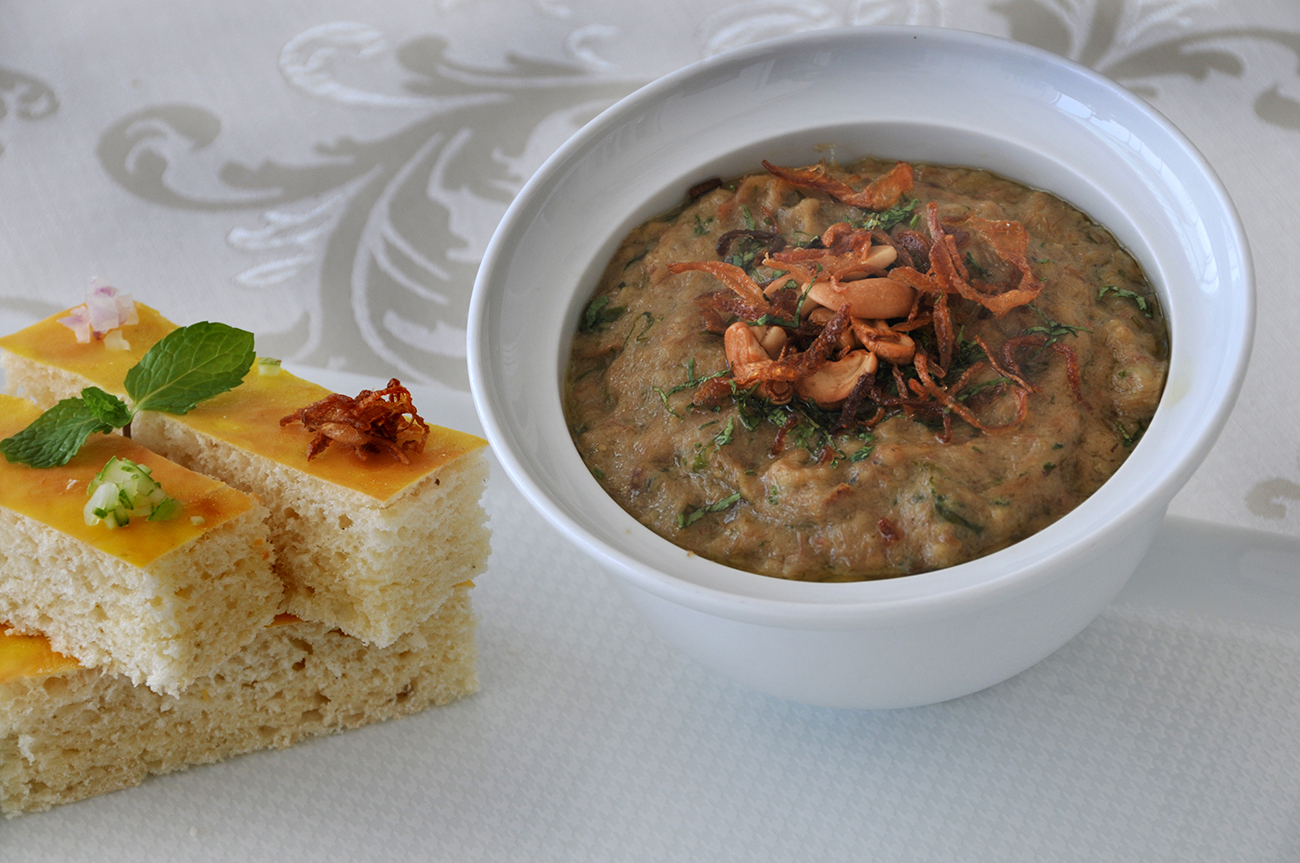 Haleem and Sheermal
Haleem and Sheermal
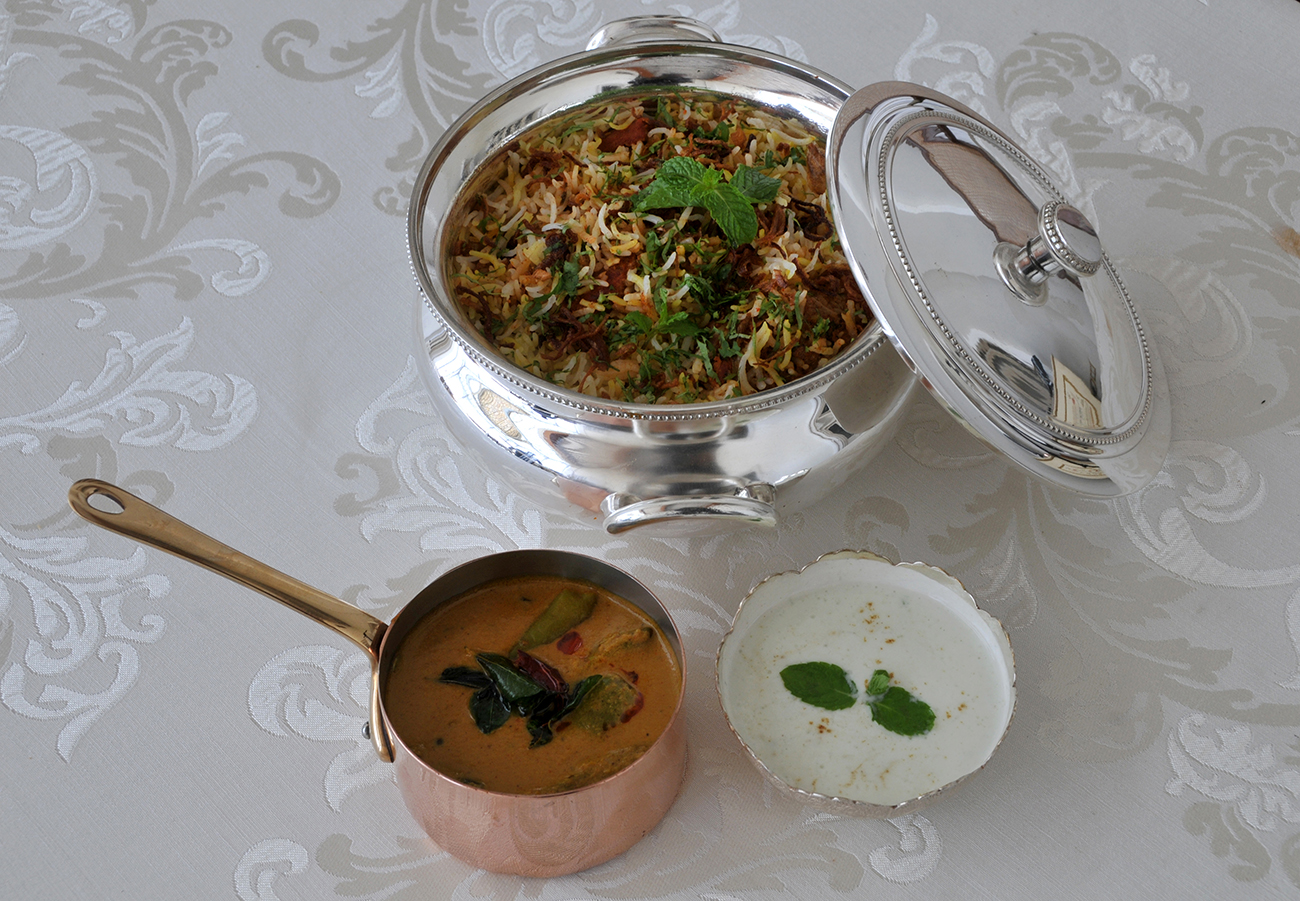 Hyderabad’s Kachhe Gosht Biryani
Hyderabad’s Kachhe Gosht Biryani
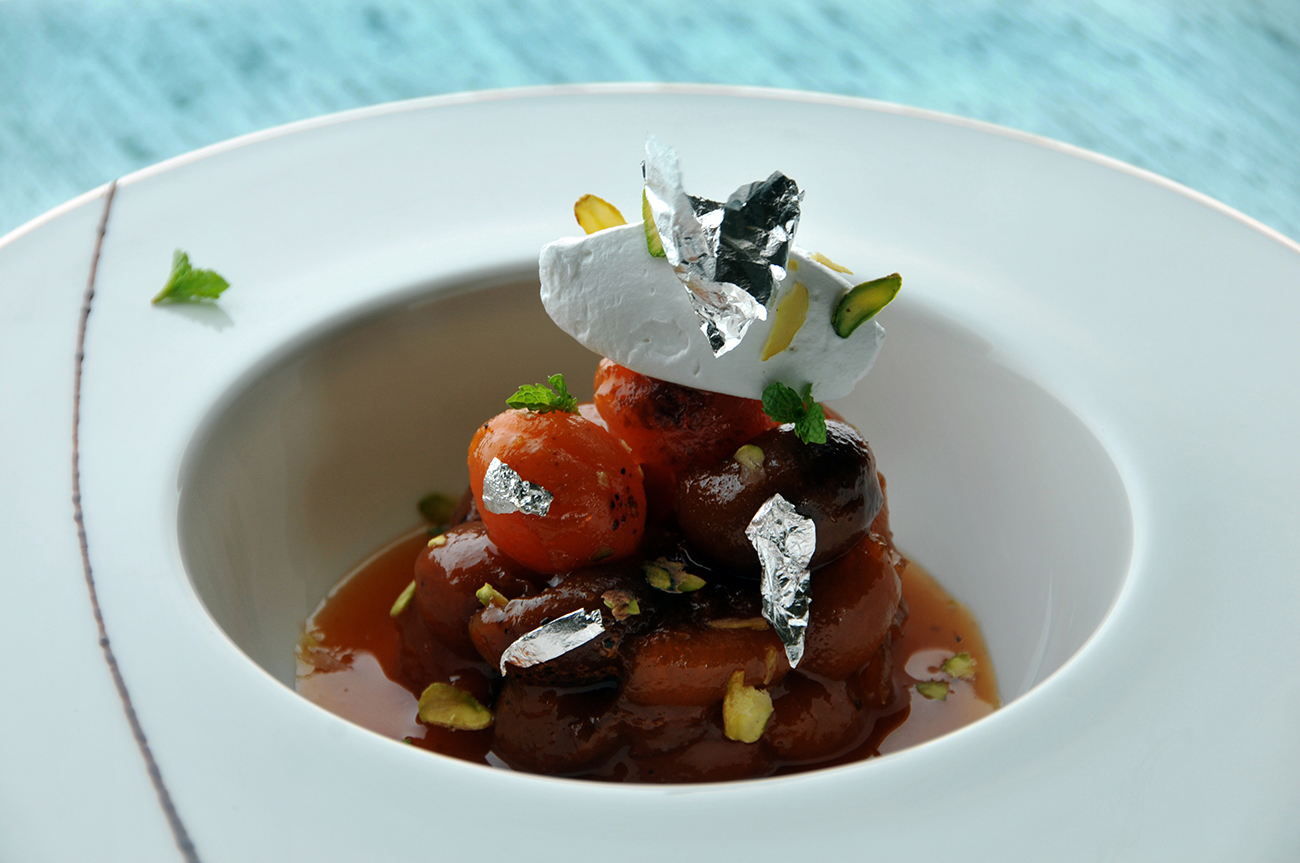 Khubani ka Meetha at Firdaus
Khubani ka Meetha at Firdaus
Hyderabad’s rich heritage dates back to 1591 when MuhammedQuli Shah founded the city near their citadel of Golconda. The planned city was laid-out in grids with majestic stone buildings and the Charminar as the heart. The city became the capital of the AsafJahi dynasty in the mid-1700s and the walls were built as a defense against the growing national power of the Marathas.
During the British Raj, Hyderabad State covered an area of about 214,190 sq km and the ruler, the Nizam, was the premier Indian prince to be accorded the 21 gun salute. Under the Nizams, the architecture, art, literature and the culinary arts flowered in Hyderabad, and Persian culture was promoted in the city. The Nizams were also responsible for developing a robust infrastructure of railways, roads, airport, educational institutions, electricity, reservoirs and waterworks. The wealth of the Nizam of Hyderabad, Nizam Sir Mir Osman Ali Khan AsafJah, went beyond imagination – he is reputed to have been the richest man in the world.
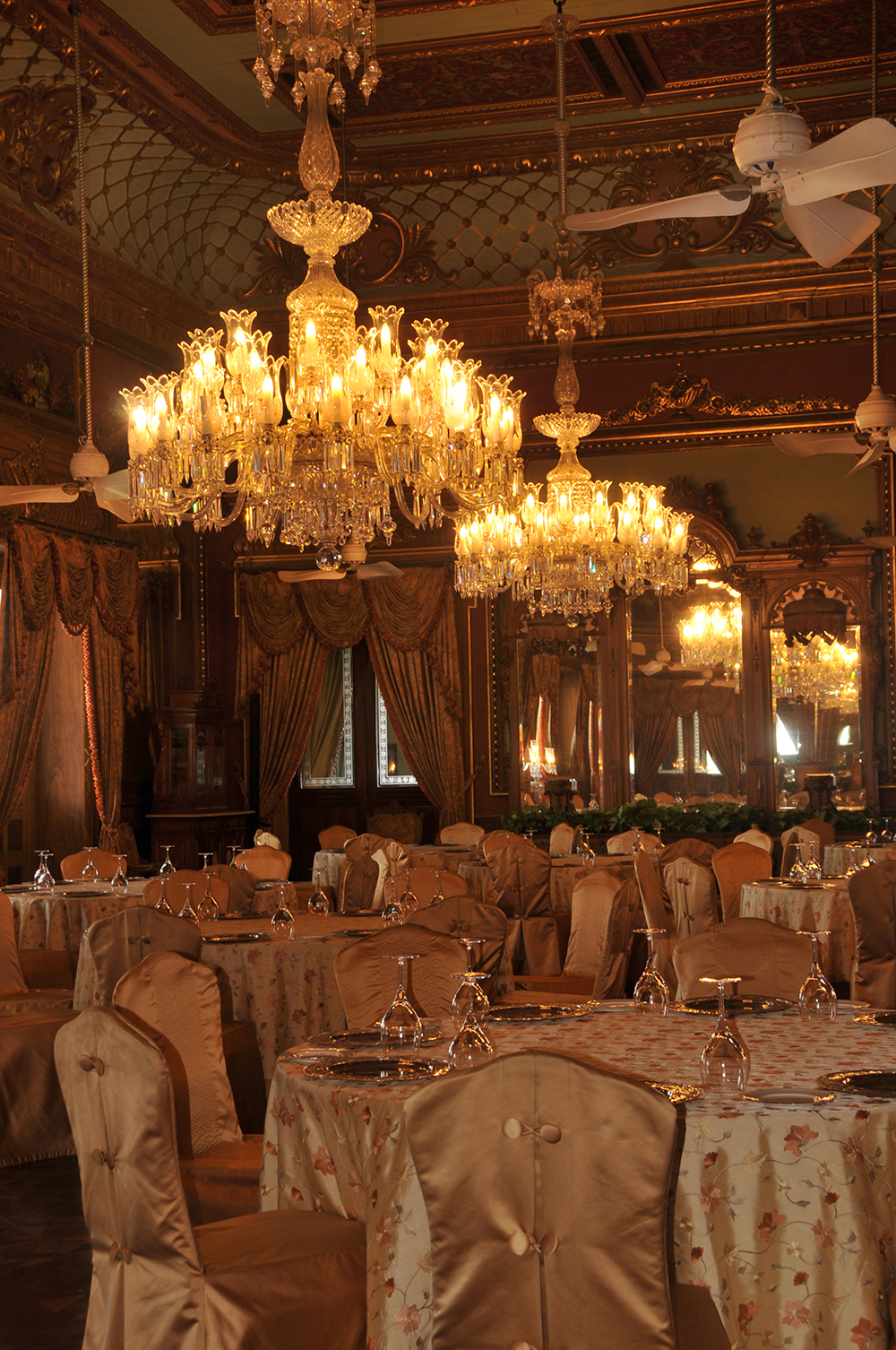 Grand dining at TAJ FALAKNUMA PALACE
Grand dining at TAJ FALAKNUMA PALACE
From the airport, we drove to the Falaknuma Palace, which was among the most opulent of the Nizam’s palaces. Today, TajFalaknuma Palace is among the ultra-luxe hotels of India.
This palace was built in 1872 and is set in huge grounds. A sweeping driveway brought us to the parking area, from where Victorian-style buggies took us to the majestic palace building. While the palace presents a Palladian façade, the areas around the courtyards (especially the ‘zanana’ where the Nizam’s harem would have stayed) are an ensemble of Indo-Saracenic domes and cupolas. We were awestruck by the lavish interiors – leather ceilings hand-tooled by Florentine craftsmen, French furniture and tapestries, porcelain, European chandeliers, stained glass, and majestic Italian marble staircases greet you in the entrance rooms themselves. The lobby has stunning marble statues with a fountain as the centerpiece, urns in the corners and murals on the walls.
Ascending the grand stairway punctuated with Grecian goddesses bearing lamps, we were shownthe dining room which has an elegant 108 ft long teak table which can seat 101 diners. Around it are other rooms full of objet-de-arts, antiques and European furniture. The Durbar Hall is another majestic room with European mirrors and Venetian chandeliers. The Nizam entertained important guests like King George V and Queen Mary, the Archduke of Austria, Lord and Lady Curzon, Tsar Nicholas II and Indian dignitaries in this palace. Today, these dining rooms are used to host private banquets and dinners that recreate the elegance and culinary riches of the erstwhile Hyderabad Princely State.
The staff took us to GolGhar which is a covered terrace with a panorama of the city with its domes and minarets.
Ask for a palace walk to see the handmade tapestries, French brocades, royal portraits, beautifully crafted, inlaid furniture from Kashmir, porcelain, objet d’art and crockery. This palace is endowed with smoking rooms, pools, ballrooms, croquet lawns, private gardens, turret rooms, stables, the library which has teak and rosewood book-lined walls housing thousands of books, and the billiards room with a table, built specially for the Nizam by Burroughs and Watts from London, and carved leather furniture. The evening Champagne Walk organized by the hotel is really good as the guide recounts tales, legends and myths of courtly life in the palaces of Hyderabad.
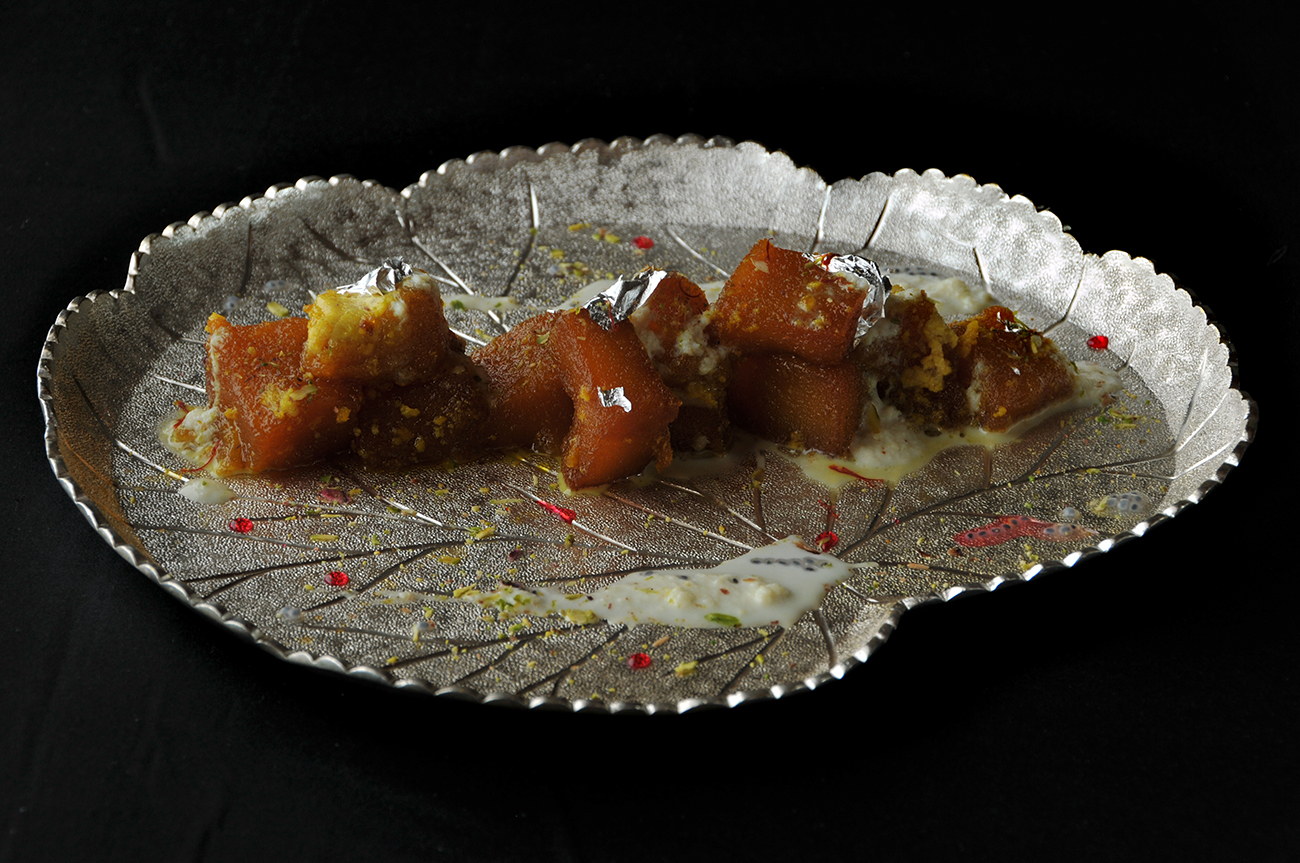 Double ka Meetha at Taj Krishna
Double ka Meetha at Taj Krishna
At the Adaa Restaurant, we ordered ShikampuriKebabmPatharkaGosht as the starters. I specially wanted to try their Kacchi Ghost ki Biryani made by cooking parboiled rice with raw meat marinated in curds, herbs and spices such that the juices of the meat slowly infuse the rice.It was delectable.
From here, we started out for the Abids area which the driver told us is the heart of Hyderabad. He showed us impressive stone buildings built during the reign of Nizam Sir Mir Osman Ali Khan Asaf Jah VII who following a catastrophic flood in 1908 and also a plague epidemic in 1911-12, established a city improvement drive. Parks and public buildings abound in this area, including works of Vincent Esch, from 1914 to 1936, and the Hyderabad state architects. You can see splendid buildings and museums.
Café Bahar in the BasheerBagh area is an excellent place to enjoy Hyderabadi dishes washed down with lassi. We enjoyed Irani chai with Osmania biscuits, a popular pairing in Hyderabad.
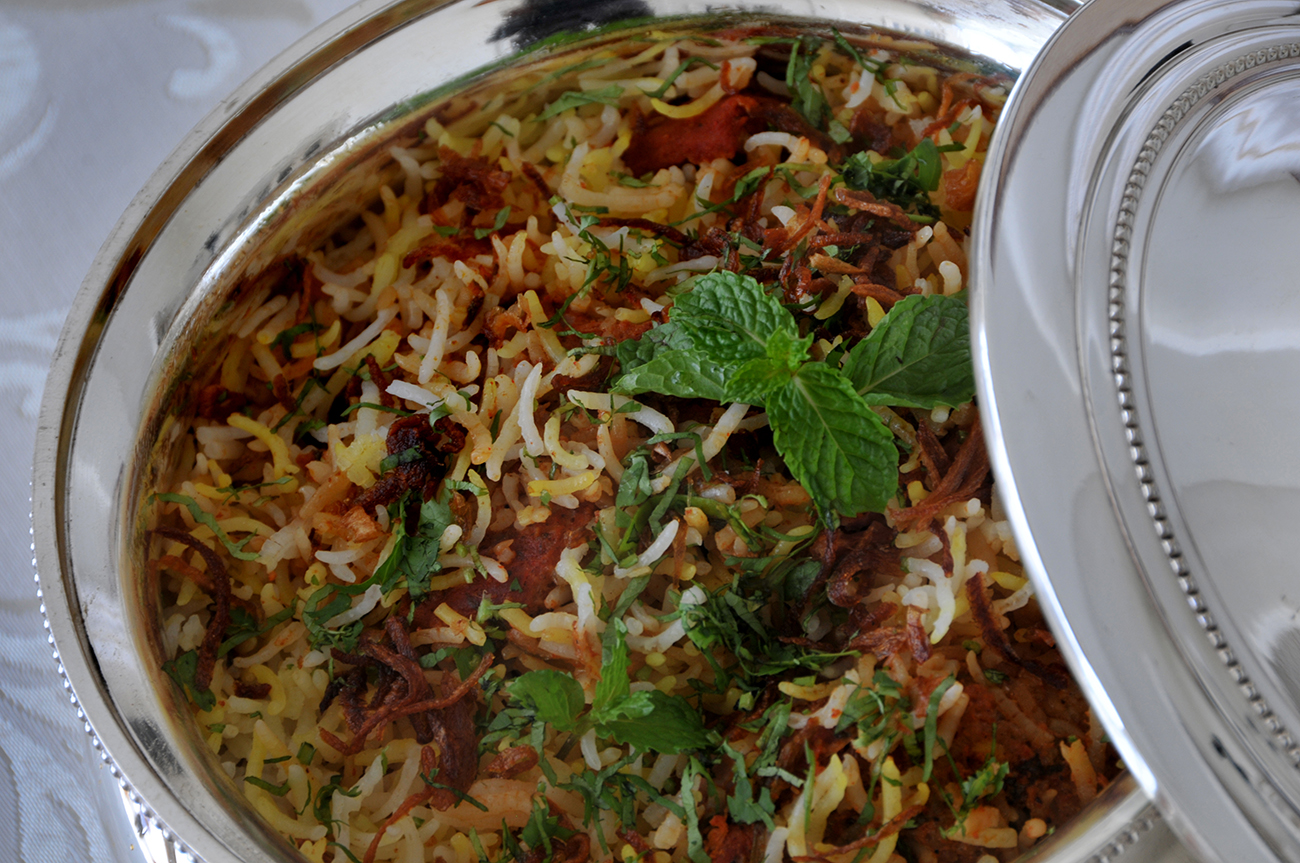 Hyderabadi Biryani
Hyderabadi Biryani
We continued from here towards the HussainSagarlake, a huge heart-shaped water body built-in 1563. It has a popular promenade, an iconic Buddha statue, and nearby parks and gardens. It abounds in amusements for children and entertainment options. The lake has Hyderabad on one side and Secundrabad on the other.
Hyderabad has many fine dining places for Hyderabadi cuisine like The Jewel of Nizam at Golkonda Hotel and Aish at Park Hotel, with décor to match. We decided to dine at Firdaus at the Taj Krishna, Banjara Hills, which is also appropriately appointed with richly upholstered furniture and chandeliers. The NalliGosht was fork tender, and we enjoyed the Haleem with Sheermal, Khatti Dal and Biryani. Hyderabad is also famous for its sweets like Double kaMeetha, KhubanikaMeetha, Asharfi, Kulfi, ShahiTukdaand AnjeerHalwa. We enjoyed ending the meal on the sweet note with these.
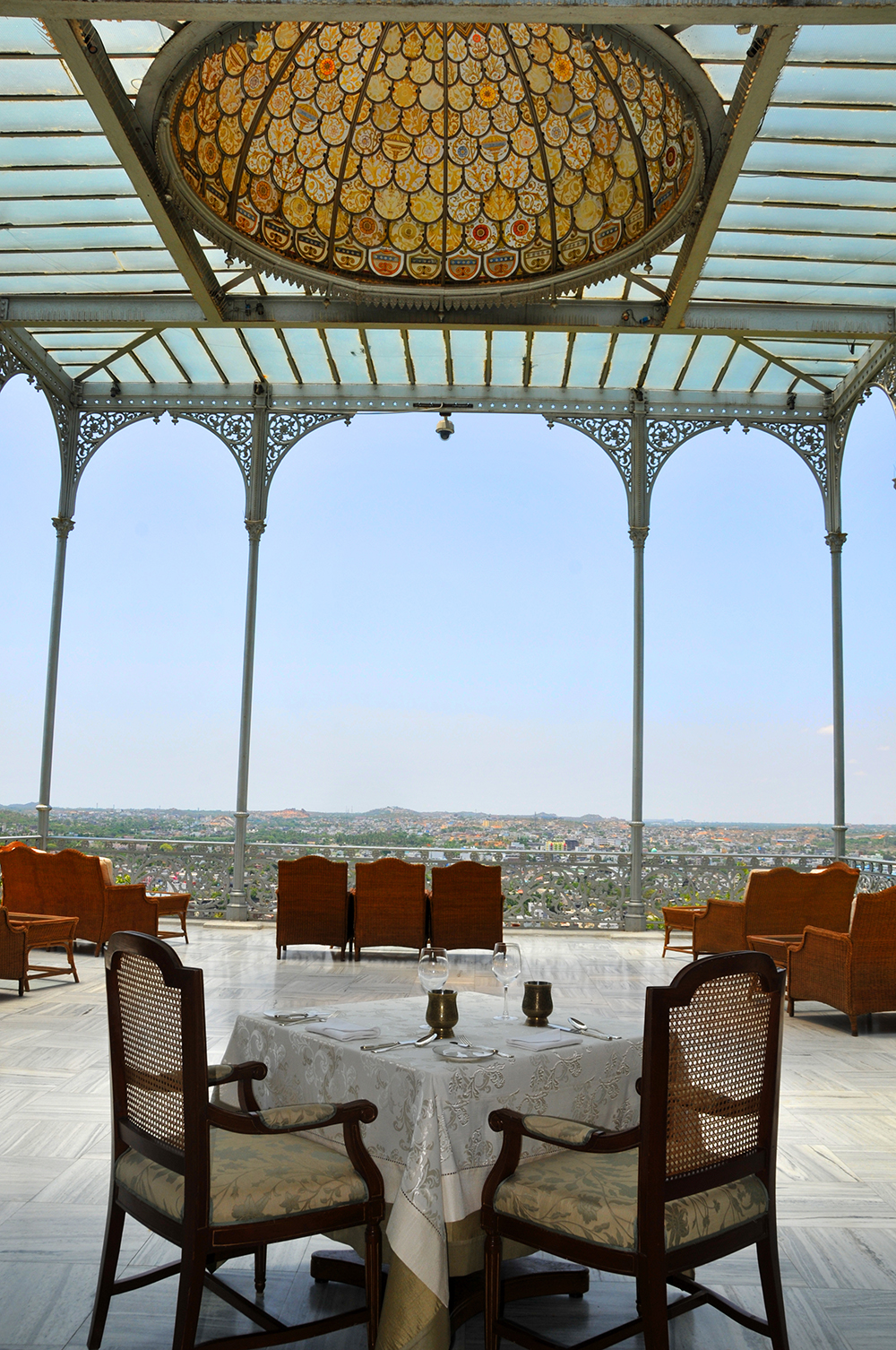 View from TAJ FALAKNUMA PALACE
View from TAJ FALAKNUMA PALACE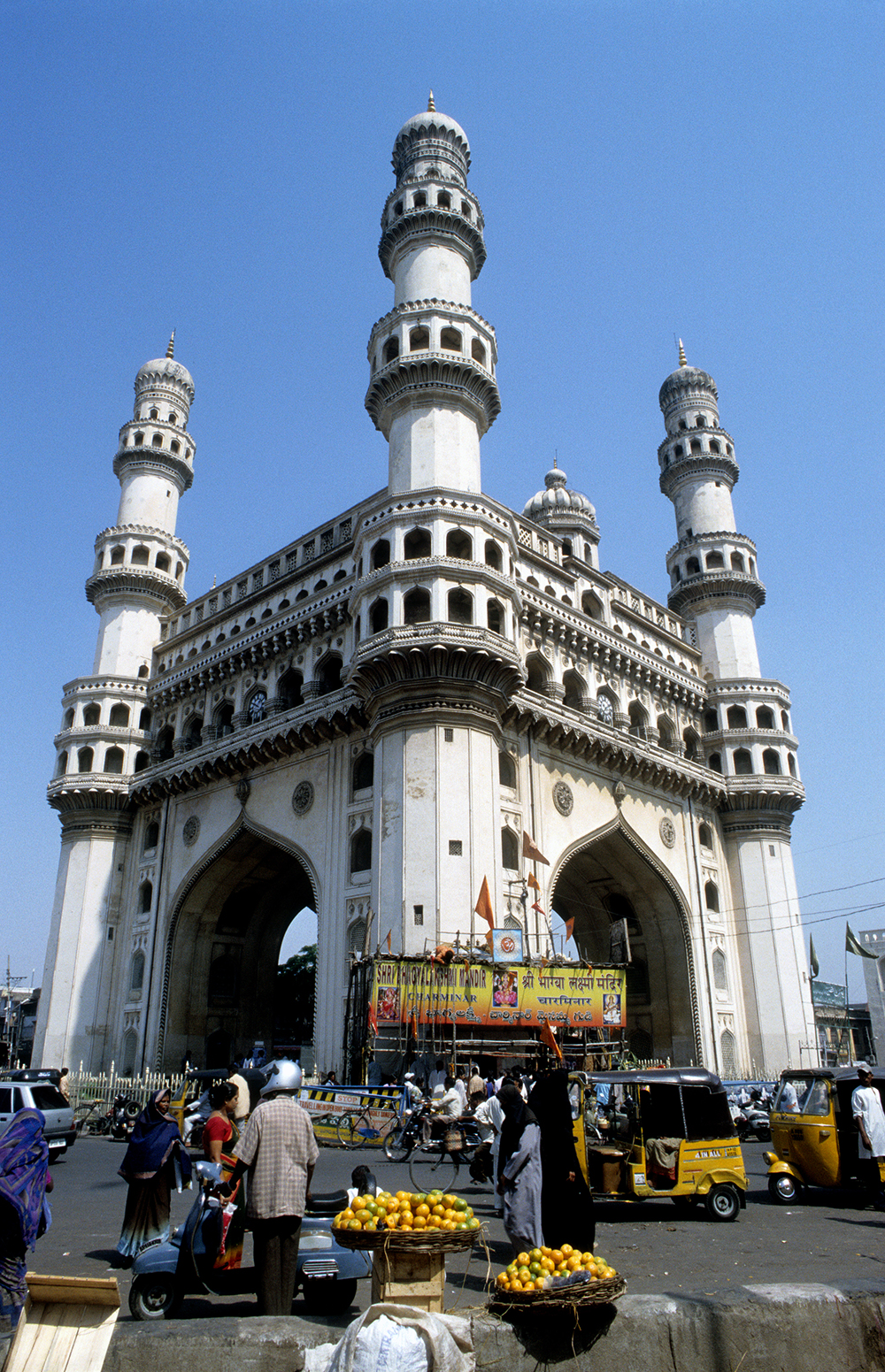 Charminar
Charminar
We drove around Secundrabad to see some of its impressive buildings. Paradise at Secundrabad is one of most popular places for Chicken65, Chicken Biryani and regional sweets.
The next morning, we started early to explore the old city of Hyderabad before it became too crowded. The Charminar is the signature building of the QutbShahi dynasty, and around it are the markets of Lad Bazaar and MehboobChowk. In this side of Hyderabad you can enjoy Mughlai and Hyderabadi style meat-heavy breakfasts. Some of the iconic places are Pista House, Shah Ghouse and Shadab.
Nearby is the medieval Mecca Masjid, a huge mosque made from bricks from Mecca and black granite, where many Nizams are entombed. The Unani Hospital for traditional medicines in this part of the city was built by the last Nizam, a patron of this school of Persian and Arabic traditional medicine that is linked also to ancient Greek texts. Another interesting sight is watching artisans beating silver and other metals into foil sheets called varakh for garnishing sweets.
We strolled to Chowmallah Palace whichwas the residence of the Nizams of Hyderabad, in the heart of the city which abounds in princely memorabilia. We drove down Pathergatti Road to the 1594AD BadshahiAshurkhana, which glows with mosaics of exquisite yellow, turquoise and orange enamel tiles, gold and silver standards, and precious stone studding on surfaces, and then visited Purani Haveli, with its gigantic wooden wardrobe, China, silverware, objet de arts, pearls, jewels, portraits, newspaper clippings about the Nizams, and photographs of courtly scenes.
One of Hyderabad’s most visited sites is the Salarjung Museum which is deservedly famous for its collection of over 40,000 pieces.
Anil Mulchandani is an author and widely published independent writer.


